The ribbon plant is a very beautiful indoor plant that’s appreciated as much for its variegated evergreen foliage as it is for its blooming.
Key Ribbon plant facts
Name – Chlorophytum comosum
Family – Antheriaceae
Type – indoor plant
Height – 20 inches (50 cm) indoors
Exposure – very well-lit
Soil – soil mix
Foliage – Evergreen
Blooming – summer
Planting and repotting ribbon plant
Upon purchasing, if the pot is too small and that the roots already reach out to the edges of the pot, proceed to repot your chlorophytum in a slightly larger pot.
After that, every year and preferably in spring, repot your ribbon plant in a pot of a very slightly larger size.
- Ribbon plant roots hate having too much water.
- Double-check that the pot has a hole in the bottom.
- Increase drainage with a layer of gravel or clay pebbles along the bottom of the pot, to make water flow through more easily.
- Proper leaf plant soil mix is required.
Propagating your ribbon plant
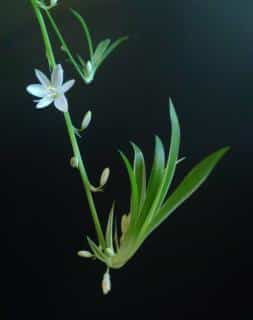
- Snip off the tiny plantlets that appear at the end of the runners.
- Place your plantlets in soil mix and give them some light.
- Keep the substrate a little moist.
- Transplant to a pot or container when the root system has thickened.
Best location for your ribbon plant
The ribbon plant can survive indoors, both in very well-lit spots and in slightly darker places.
The best place to set up your ribbon plant is near a window that lets a lot of light through, but isn’t in direct sunlight.
If you’re looking for a plant to put in your bathroom and that it has a window, a ribbon plant is the perfect choice.
The more light a ribbon plant receives, the nicer its foliage.
Absolutely avoid setting it near heat sources such as radiators, because moisture is what this tropical plant needs most.
- Ideal temperatures are around 60 to 75°F (15 to 25°C).
Planting and caring for your ribbon plant
Eliminate dead and wilted leaves as you notice them, only snipping off the portion that has already died off and leaving the healthy part intact.
In summer, you can settle your ribbon plant outdoors, just avoid direct sun.
Watering ribbon plant
The ribbon plant can’t take dry spells but also dies if there’s excess moisture in the soil.
- Regular but moderate watering is called for.
- All year long, and especially during summer, spray water on the leaves to recreate the moisture levels of its natural habitat.
In spring and summer
Verify that the soil mix stays moist and check that water drains properly.
Provide leaf plant liquid fertilizer every 8 to 15 days during the growing phase.
- Mist the leaves on a regular basis with calcium-free water.
In fall and winter
Decrease the watering and wait for the soil to be dry before watering again. The cooler the surrounding temperature gets, the less you need to water.
- Suspend adding fertilizer.
Diseases and common mistakes when growing ribbon plants
The tips of leaves dry up and turn brown
This is a common problem for ribbon plants, and it usually means that the surrounding air is too dry.
- Snip off the damaged leaves at the base of the plant.
- Mist soft water on the leaves.
- If need be, rest the pot on a tray with clay pebbles doused in water, without letting the pot itself touch the water. Evaporation helps recreate moisture in the air.
If the leaves tend to lose their shine, it is a good idea to give it more light.
Ribbon plant parasites and diseases
Most diseases targeting the ribbon plants are the usual indoor plant diseases, red spider mites and scale insects.
All there is to know about the ribbon plant
The ribbon plant is a very interesting indoor plant, thanks to its variegated evergreen foliage and its summer blooming. It bears cute white flowers in summer.
A fast-growing plant, it’s best to grow it in a pot or container, otherwise it would tend to grow invasive. That’s actually one of the reasons it has to be repotted so regularly.

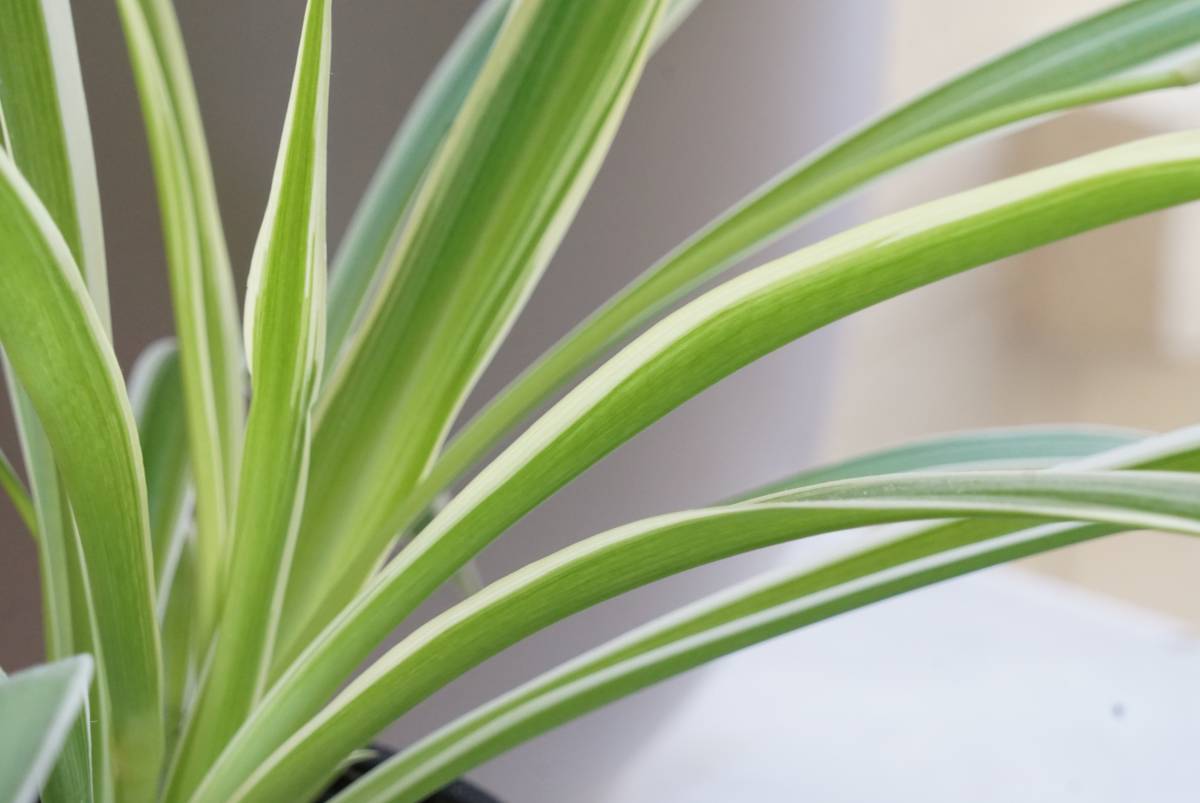
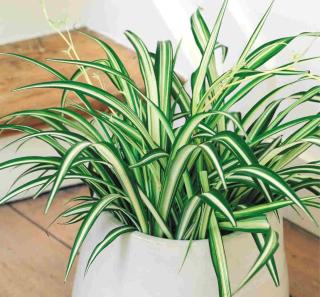
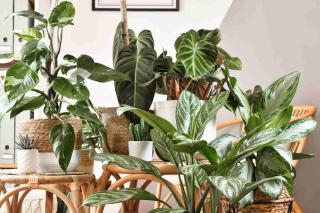
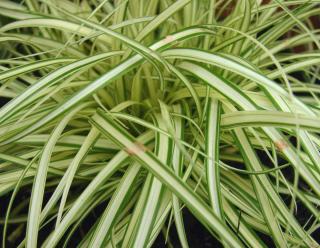
I have a stalk-like Ribbon plant that is getting quite tall – in a 9″ pot – over the last 8yrs.
I’d like to keep it at its current height…and not re-pot if it can be avoided.
What should I do?
Hi John! There are two main options to keep your plant thriving without repotting. They’re not exclusive, so you can do both together if you wish.
– the first is to topdress. This means removing soil from the top of the pot to a depth of one or two inches (around 5 cm), until roots make this difficult. Then, fill that space up with fresh compost + potting mix. Nutrients will trickle down to the roots below.
– the second is to add fertilizer to your watering. What’s best is to alternate different fertilizers if you use store-bought ones, to vary nutrients. However, you can make your own fertilizer if you can get your hand on what no one else wants: weeds! These fermented weed teas make for excellent, complete fertilizers. What ever you use, keep doses low. It’s easy to “burn” the plant with too much fertilizer. Dilute with rainwater instead of tap water, especially in the long term, so minerals won’t build up.
Repotting has a double purpose. One is to replenish nutrients, but the above techniques cover that aspect. The second, however, is overdeveloped roots choking the plant out. This also reduces growth. There’s no other way to solve this but to remove the plant from its pot. Either you transplant to a larger pot, or you snip off about a third of the roots and put it back in the same pot (best with fresh soil, but not necessarily).
Since you’ve had the plant for 8 years, you must have a feeling of what makes it happy, so keep it up!